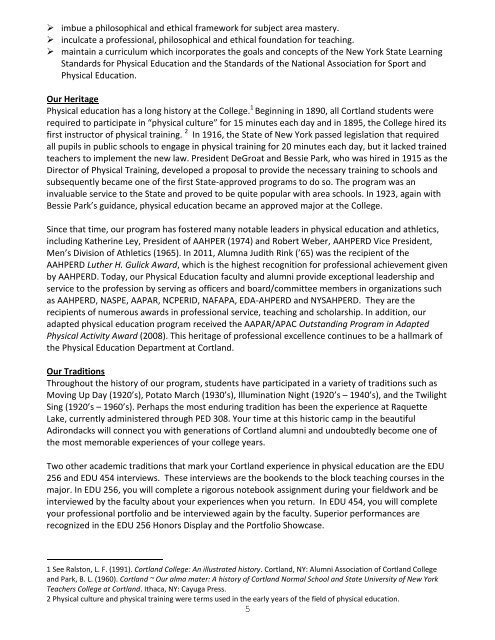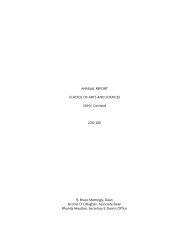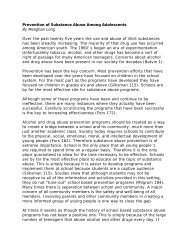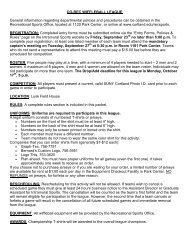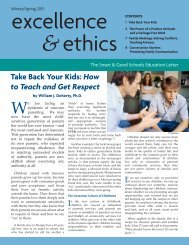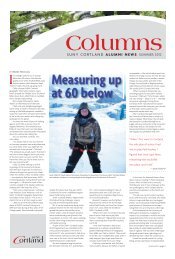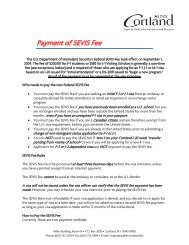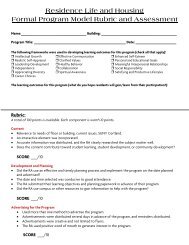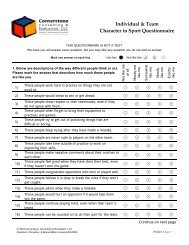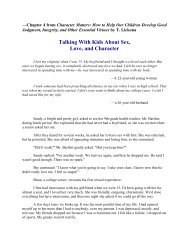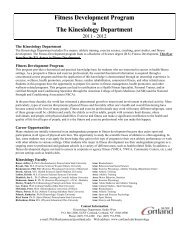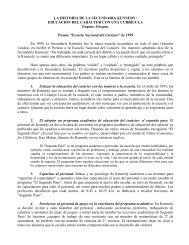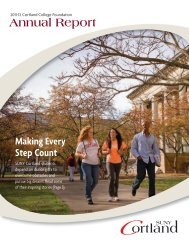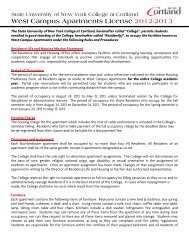ACADEMIC ADVISEMENT MANUAL - SUNY Cortland
ACADEMIC ADVISEMENT MANUAL - SUNY Cortland
ACADEMIC ADVISEMENT MANUAL - SUNY Cortland
- No tags were found...
You also want an ePaper? Increase the reach of your titles
YUMPU automatically turns print PDFs into web optimized ePapers that Google loves.
‣ imbue a philosophical and ethical framework for subject area mastery.‣ inculcate a professional, philosophical and ethical foundation for teaching.‣ maintain a curriculum which incorporates the goals and concepts of the New York State LearningStandards for Physical Education and the Standards of the National Association for Sport andPhysical Education.Our HeritagePhysical education has a long history at the College. 1 Beginning in 1890, all <strong>Cortland</strong> students wererequired to participate in “physical culture” for 15 minutes each day and in 1895, the College hired itsfirst instructor of physical training. 2 In 1916, the State of New York passed legislation that requiredall pupils in public schools to engage in physical training for 20 minutes each day, but it lacked trainedteachers to implement the new law. President DeGroat and Bessie Park, who was hired in 1915 as theDirector of Physical Training, developed a proposal to provide the necessary training to schools andsubsequently became one of the first State-approved programs to do so. The program was aninvaluable service to the State and proved to be quite popular with area schools. In 1923, again withBessie Park’s guidance, physical education became an approved major at the College.Since that time, our program has fostered many notable leaders in physical education and athletics,including Katherine Ley, President of AAHPER (1974) and Robert Weber, AAHPERD Vice President,Men’s Division of Athletics (1965). In 2011, Alumna Judith Rink (’65) was the recipient of theAAHPERD Luther H. Gulick Award, which is the highest recognition for professional achievement givenby AAHPERD. Today, our Physical Education faculty and alumni provide exceptional leadership andservice to the profession by serving as officers and board/committee members in organizations suchas AAHPERD, NASPE, AAPAR, NCPERID, NAFAPA, EDA-AHPERD and NYSAHPERD. They are therecipients of numerous awards in professional service, teaching and scholarship. In addition, ouradapted physical education program received the AAPAR/APAC Outstanding Program in AdaptedPhysical Activity Award (2008). This heritage of professional excellence continues to be a hallmark ofthe Physical Education Department at <strong>Cortland</strong>.Our TraditionsThroughout the history of our program, students have participated in a variety of traditions such asMoving Up Day (1920’s), Potato March (1930’s), Illumination Night (1920’s – 1940’s), and the TwilightSing (1920’s – 1960’s). Perhaps the most enduring tradition has been the experience at RaquetteLake, currently administered through PED 308. Your time at this historic camp in the beautifulAdirondacks will connect you with generations of <strong>Cortland</strong> alumni and undoubtedly become one ofthe most memorable experiences of your college years.Two other academic traditions that mark your <strong>Cortland</strong> experience in physical education are the EDU256 and EDU 454 interviews. These interviews are the bookends to the block teaching courses in themajor. In EDU 256, you will complete a rigorous notebook assignment during your fieldwork and beinterviewed by the faculty about your experiences when you return. In EDU 454, you will completeyour professional portfolio and be interviewed again by the faculty. Superior performances arerecognized in the EDU 256 Honors Display and the Portfolio Showcase.1 See Ralston, L. F. (1991). <strong>Cortland</strong> College: An illustrated history. <strong>Cortland</strong>, NY: Alumni Association of <strong>Cortland</strong> Collegeand Park, B. L. (1960). <strong>Cortland</strong> ~ Our alma mater: A history of <strong>Cortland</strong> Normal School and State University of New YorkTeachers College at <strong>Cortland</strong>. Ithaca, NY: Cayuga Press.2 Physical culture and physical training were terms used in the early years of the field of physical education.5


